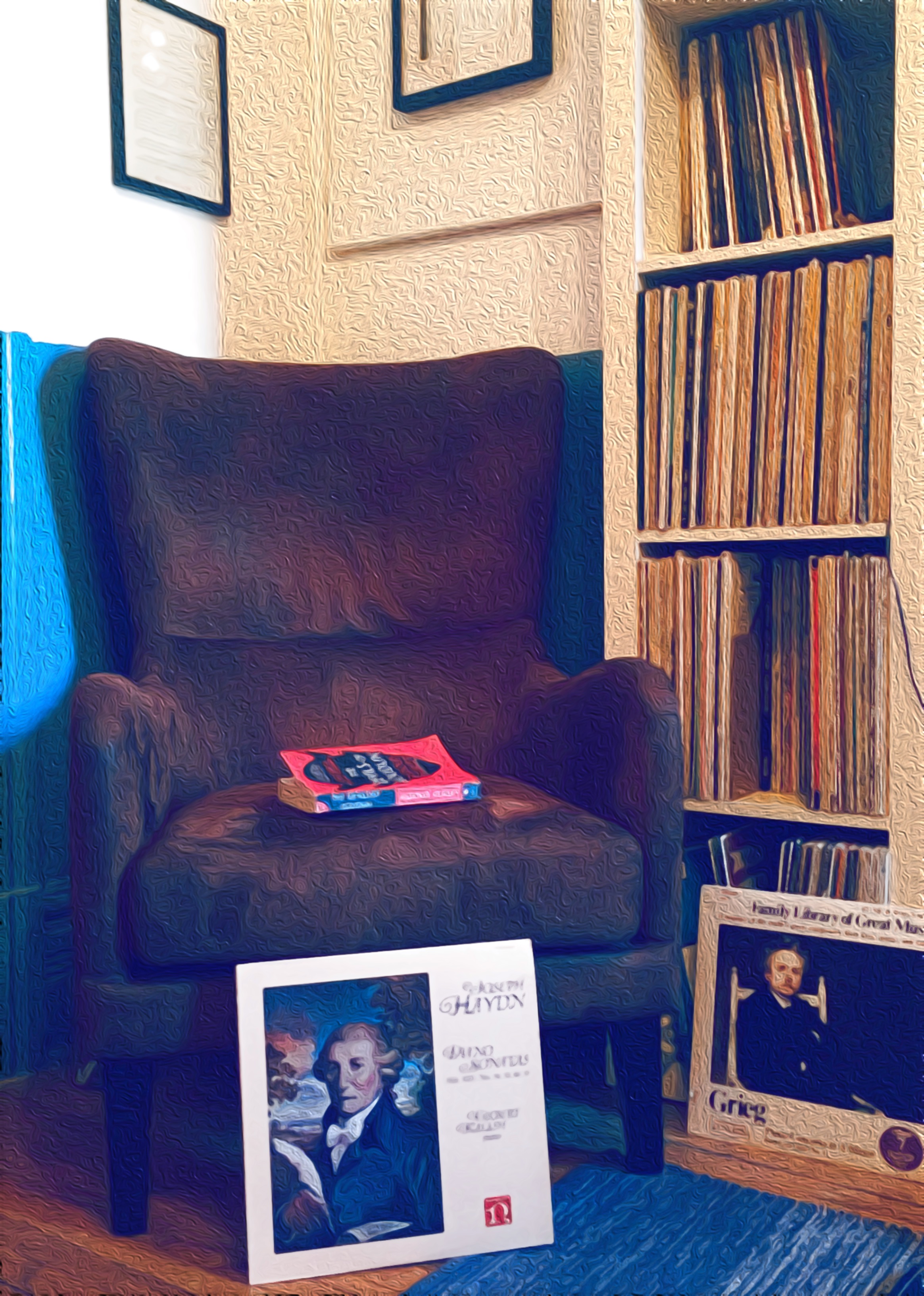His last public appearance was at a gala Vienna performance of The Creation in 1808, where he was extravagantly lauded and his one-time student Beethoven knelt to kiss his hands. But Haydn could not make it through the performance. The next year he died during Napoleon’s assault on Vienna, shortly after a bomb exploded in his garden and terrified the household. “” jan swafford, Language of The Spirit
as a little reminder of that july kind of slowness, in august company---haydn’s sonatas inspire a rhapsodic somnambulism as a measure against the pinched and frantic urgencies that are naturally attached to frigid weather like the kind we’ve endured the last nine or so days.
In his person Haydn was homely, amiable, old fashioned in clothes and wig, generally called “Papa” by his employees and students. In adulthood he had few enemies other than his wife. “” jan swafford, Language of The Spirit
the talent for churning out parlour-music that was passed on to chopin by mozart (thereon to erik satie and the like) seems to have originated discreetly in the prolific longevity of haydn’s career. known simultaneously as the ‘father of the string quartet’ and of the symphony, the scope of his output also included 52 piano sonatas that paint playful yet elaborate scenes of a modest refinement, the kind made more infinitesimally intricate and percussive by mozart and thereafter slurred into lyrical brilliance in the hands of chopin and his fellow romantics.
Mozart said Haydn taught him how to write string quartets, and dedicated an important set of six to the older man. Haydn had written a number of operas for the court theatre and for years considered himself mainly an opera composer. That illusion ended when Mozart’s operas appeared in Vienna. The last time somebody offered Haydn a commission for an opera he responded, that would be a big risk for me---you should hire Mozart. “” jan swafford, Language of The Spirit
in comparison to chopin, who is for me the meaning of lyricism on the piano, haydn’s style is altogether colder, cleaner, more studious… a northern chopin… the sound of le corbusier’s hands gliding back and forth across the blueprints of some little radiant german city he’s dreamed up (and aside from name, there appears to be nothing else french about that man)….
(program)
Long ago I learned that when encountering Beethoven’s supposed innovations, you often find that Haydn got there first. “” jan swafford, Language of The Spirit
Nonesuch recording. Printed in U.S.A // Joseph Haydn (1732-1809) // Sonatas 32, 34, 46 and 51
Gilbert Kalish Piano
Sonata in E minor, Hob. XVI:34
Sonata in B minor, Hob. XVI:32
Sonata in A-flat, Hob.XVI: 46
Sonata in D, Hob.XVI: 51
(piano sonata #32: tempi di menuet)-------
a small excerpt of the line that runs through haydn and mozart can be found in the Tempo Di Menuet section of haydn’s Sonata in E minor (Hob. XVI: 32) and the Larghetto section of mozart’s Piano Concerto #11---in particular the undulating turns taken between the percussive and the melodic:
(piano sonata #32: presto)----
“Not slow and dull but quick and piercing of wit” was how poet john milton describe his vision of the english character during his plea to the Lords and Commons of England for the sake of Enlightenment values--and were the words that came to mind to encapsulate the presto section of haydn’s Sonata in E minor:
True, neither Haydn nor his contemporaries were much inclined to tragic expression; the Enlightenment was a period of tremendous hope for humanity and science and art. His music rose from that hope. Late in life Haydn said that if his music could life us out of our cares for a little while, that was worth all his trouble. That’s a modest ambition for an artist, but it’s as worthy as any I know. If we let him, he can still do that. “” jan swafford, Language of The Spirt
in that same spirit of ebullience and piercing wit do i find what is my favorite composition by haydn, the Allegro con Spirito of his Quartet No.60 (Op.76 No.1).

